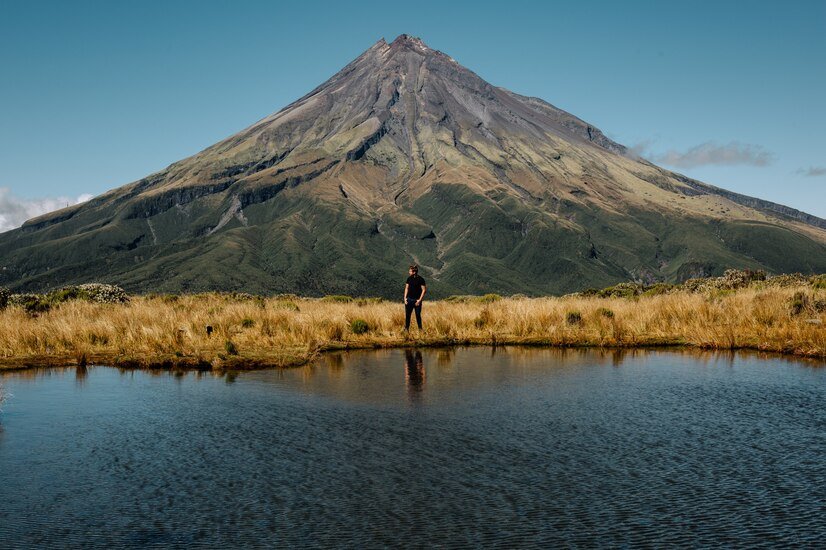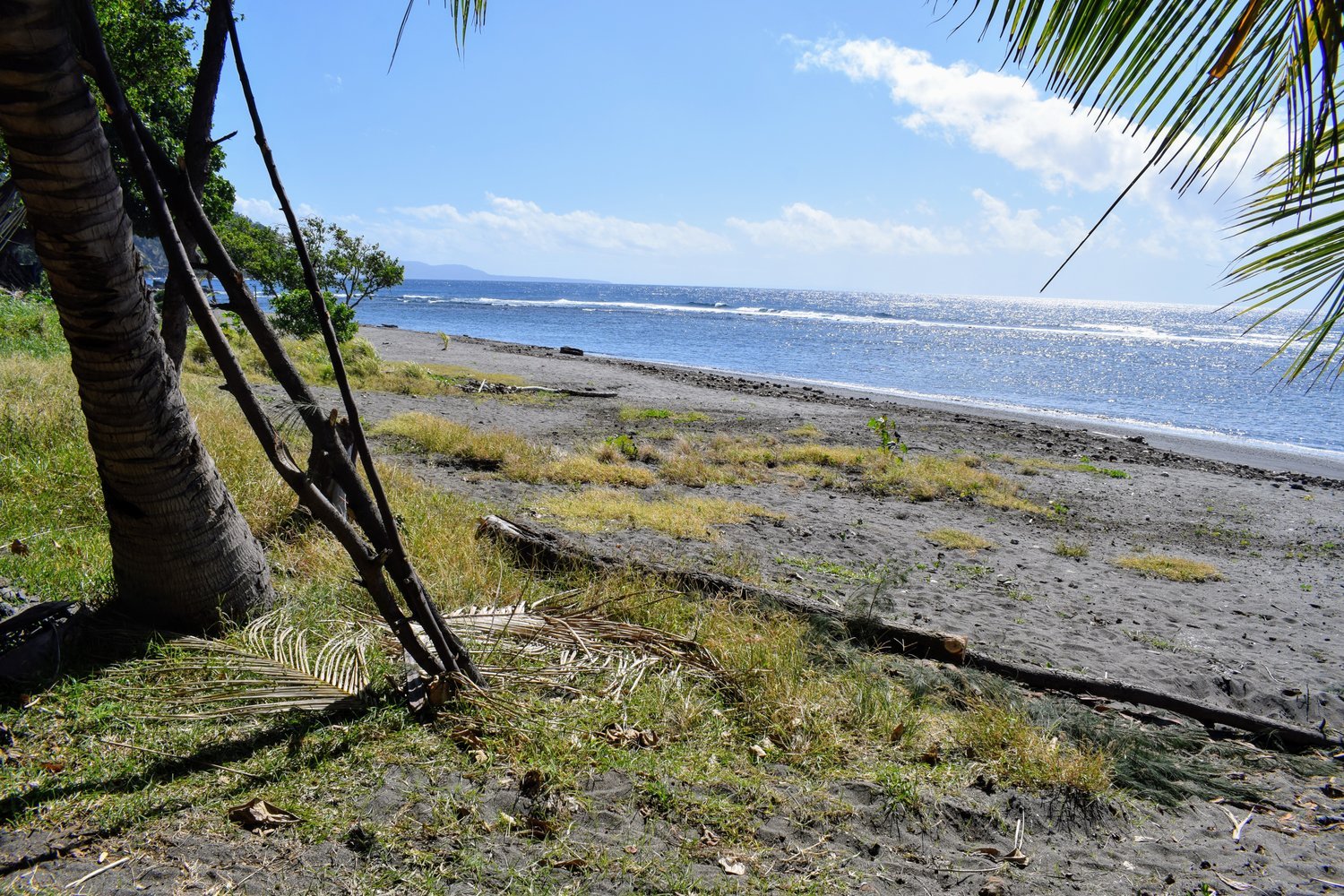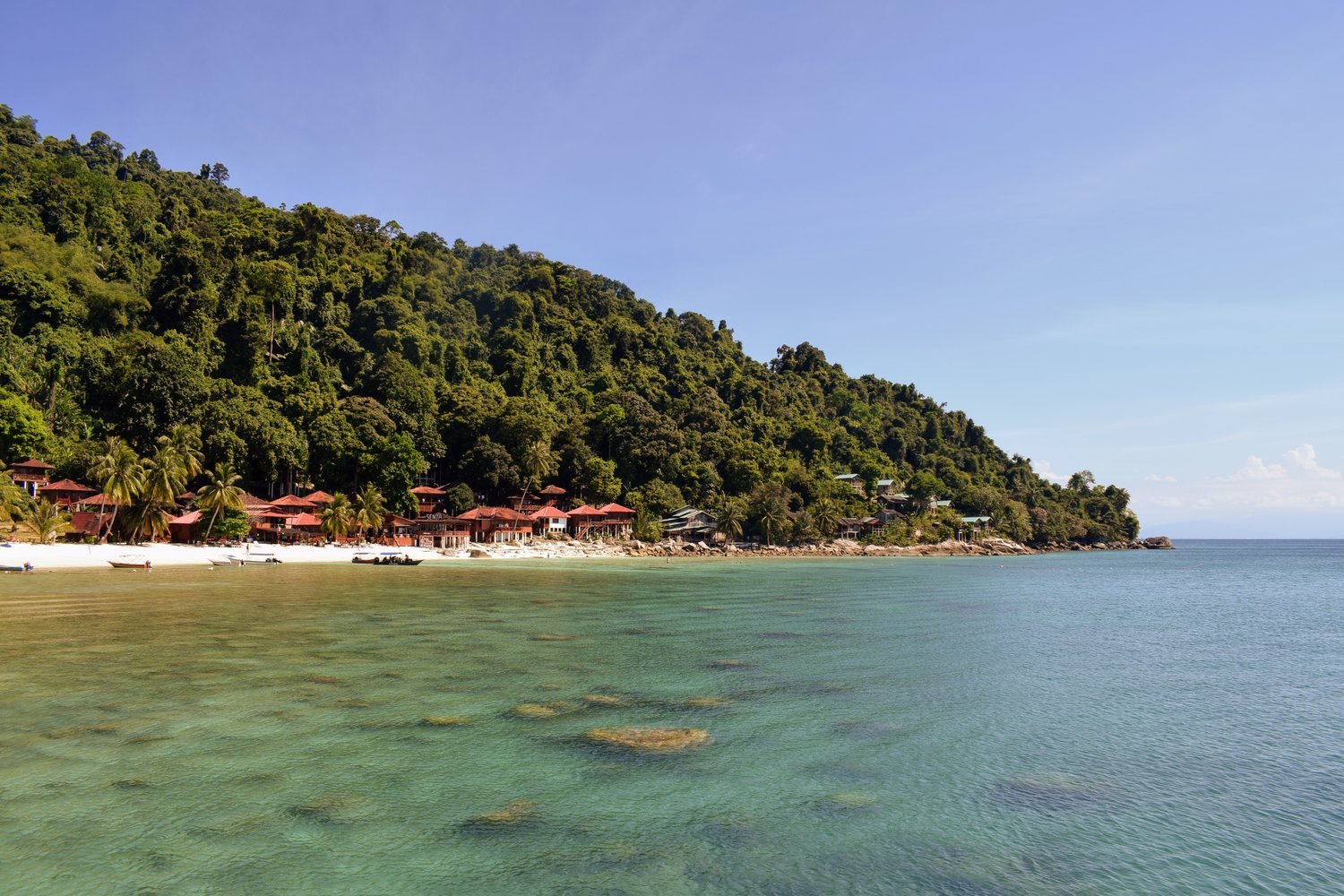Travel
At the Foot of Mount Yasur: A Journey to the World’s Most Accessible Active Volcano

Nestled on the rugged island of Tanna in Vanuatu, At the Foot of Mount Yasur lies a realm where nature’s raw power and cultural heritage blend seamlessly. As one of the most accessible active volcanoes in the world, Mount Yasur has captivated travellers for centuries, offering an exhilarating spectacle of fiery eruptions and thundering roars. But beyond its volcanic activity, the area is rich with cultural experiences and natural wonders that make this destination truly unforgettable.
The Mystique of Mount Yasur
Mount Yasur stands majestically against the Tanna Island skyline, its summit perpetually shrouded in a plume of volcanic smoke. This active stratovolcano is estimated to have been erupting continuously for over 800 years. The locals regard it as a spiritual entity, believed to be the dwelling place of ancestral spirits. This cultural reverence adds a layer of mystique to the already dramatic volcanic landscape.
Visitors who find themselves at the foot of Mount Yasur are immediately enveloped by an aura of awe and respect. The rhythmic rumbling and sporadic bursts of incandescent lava provide a sensory overload, a thrilling reminder of Earth’s untamed power. The viewing area, located just a short hike from the base, offers an unparalleled vantage point to witness the mesmerizing eruptions against the backdrop of the night sky.
Adventure Awaits: Experiencing Volcanic Eruptions Up Close
Standing at the foot of Mount Yasur is not merely about observation; it’s about immersion. Guided tours provide an educational yet thrilling experience, as local experts lead visitors along the rugged trails to safe viewing platforms. The journey itself is an adventure, with steep ascents and sweeping views of the surrounding ash plains and lush jungle.
The highlight, of course, is the eruption display. As dusk falls, the darkening skies amplify the fiery explosions that paint the heavens with hues of red and orange. The ground trembles beneath, a stark reminder of the volcano’s might. Witnessing this natural phenomenon up close is nothing short of a humbling experience, leaving visitors in awe of Earth’s primal forces.
Cultural Immersion at the Foot of Mount Yasur
Mount Yasur is more than just a geological wonder; it is a cultural treasure. The island’s indigenous communities have a deep spiritual connection with the volcano, integrating it into their customs and beliefs. At the foot of Mount Yasur, travelers can engage with the local tribes, gaining insight into their traditions and way of life.
Participating in ceremonial dances and rituals allows visitors to experience the island’s vibrant culture firsthand. These interactions foster a sense of respect and appreciation for the people who call Tanna Island home. Furthermore, staying in local bungalows or village homestays enhances the cultural immersion, providing an authentic glimpse into daily island life.
Exploring Tanna Island: Beyond the Volcano
While Mount Yasur is undoubtedly the highlight, visitors can explore a plethora of other attractions on Tanna Island. Its lush rainforests, pristine beaches, and cascading waterfalls make the island renowned. A visit to the Blue Cave, a hidden sea grotto accessible only by swimming through an underwater passage, is a must for adventure seekers.
For those interested in history and spirituality, a trip to the village of Yaohnanen is essential. Here, the unique “Prince Philip Movement” thrives, a fascinating cargo cult that venerates the late Duke of Edinburgh as a deity. This cultural curiosity offers a glimpse into the island’s rich and complex belief systems.
Practical Tips for Visiting Mount Yasur
To make the most of the journey to the Foot of Mount Yasur, it is crucial to plan ahead. The best time to visit is during the dry season, from April to October, when weather conditions are favorable for outdoor exploration. Visitors should be prepared for rugged terrain by wearing sturdy hiking shoes and carrying essentials like water, snacks, and protective gear against volcanic ash.
It is recommended to book guided tours through authorized operators to ensure safety and enrich the experience with local knowledge. As the volcano is sacred to the islanders, respecting local customs and guidelines is imperative. Visitors should also be mindful of environmental conservation practices to preserve this natural wonder for future generations.
At the Foot of Mount Yasur, adventure, culture, and nature converge to create an extraordinary travel experience. From the awe-inspiring volcanic eruptions to the enriching cultural encounters. Every moment spent on Tanna Island is infused with magic and wonder. Whether you’re an adventure seeker, a culture enthusiast, or simply a traveler searching for unique experiences. Mount Yasur promises memories that will last a lifetime. So, pack your bags and set forth on an unforgettable journey to one of the world’s most captivating natural wonders.
Accommodations
Cabo San Lucas Vacation Rentals: Find the Perfect Getaway

Cabo San Lucas is more than just a popular vacation destination—it’s a tropical paradise where adventure meets relaxation. Whether you’re planning a family trip, a romantic getaway, or a solo retreat, Cabo offers an array of vacation rentals that can suit every type of traveler. With crystal-clear waters, beautiful beaches, and a vibrant culture, choosing the right vacation rental is the first step toward an unforgettable experience.
In this guide, we’ll explore the best Cabo San Lucas vacation rentals, provide valuable tips on how to book your ideal stay, and give you insights into local neighborhoods and attractions that will make your trip even more special.
Why Choose Cabo San Lucas for Your Next Vacation?
Cabo San Lucas, located at the southern tip of the Baja California Peninsula, is known for its stunning coastline, world-class resorts, and a wide range of vacation rentals. But why should you consider it for your next trip? Here are just a few reasons:
Stunning Beaches: From the famous Medano Beach to the quieter Lover’s Beach, the variety of beaches in Cabo caters to every kind of traveler, whether you’re into water sports or just want to relax by the shore.
Exciting Activities: Cabo offers endless activities, including snorkeling, scuba diving, fishing, zip-lining, and hiking. You can explore the natural beauty of the desert landscape or the underwater world.
Vibrant Nightlife: Cabo is also known for its lively nightlife, with beach clubs, bars, and restaurants offering entertainment for all tastes.
Perfect Weather Year-Round: The warm, sunny climate of Cabo makes it a perfect destination throughout the year. With over 350 sunny days annually, you’re guaranteed great weather during your stay.
Now that you know why Cabo San Lucas is a top vacation spot, let’s dive into the types of vacation rentals you can find in this beautiful destination.
Types of Cabo San Lucas Vacation Rentals
When it comes to vacation rentals, Cabo offers a wide range of options, from budget-friendly condos to luxurious beachfront villas. Depending on your preferences, you can find the perfect place to stay.
1. Beachfront Villas:
For those who want to wake up with the sound of waves crashing and enjoy breathtaking ocean views right from their balcony, beachfront villas are the ideal choice. These properties often come with private pools, large patios, and easy access to the beach, providing a truly luxurious and intimate experience.
2. Luxury Condos:
If you’re traveling with a group or family, a luxury condo might be the best fit. These rentals offer spacious living areas, fully equipped kitchens, and great amenities like pools, gyms, and concierge services. Many are located in gated communities that provide added security and privacy.
3. Budget-Friendly Options:
Traveling on a budget? No problem. Cabo has plenty of affordable vacation rentals, from cozy apartments to charming cottages. These options may not have all the luxurious amenities of a villa, but they offer great value for money and a comfortable stay.
4. Private Homes and Estates:
For larger groups or families, private homes and estates are an excellent choice. These rentals offer more space, privacy, and often come with extra amenities like home theaters, game rooms, and outdoor living areas. Many private homes are located in quiet residential areas, giving you a peaceful retreat while still being close to Cabo’s attractions.
Best Neighborhoods to Stay in Cabo San Lucas
Choosing the right neighborhood is key to enjoying your vacation in Cabo. Different areas of the city offer different vibes and experiences. Here are a few of the best neighborhoods for vacation rentals:
1. Medano Beach:
Medano Beach is one of the most popular areas in Cabo, known for its lively atmosphere and beachfront resorts. If you’re looking for a rental close to the action—restaurants, bars, and beach activities—this is the place to be.
2. Pedregal:
Pedregal is one of Cabo’s most exclusive neighborhoods, offering luxurious homes with stunning ocean views. This area is perfect for travelers looking for privacy and seclusion, while still being close to downtown Cabo San Lucas.
3. Cabo San Lucas Marina:
For those who want to be in the heart of the city, the Cabo San Lucas Marina area is ideal. Here, you’ll find a wide selection of vacation rentals, from condos to luxury yachts, with plenty of restaurants, shops, and nightlife options nearby.
4. Puerto Los Cabos:
Located just outside the city center, Puerto Los Cabos is a quieter, more serene neighborhood. It’s perfect for those looking for a relaxing vacation, with its beautiful beaches, golf courses, and luxury resorts.
How to Book Your Cabo San Lucas Vacation Rental
Booking a vacation rental in Cabo San Lucas is relatively easy, but to get the best deal, there are a few things to keep in mind:
Book Early: Cabo is a popular destination, especially during peak seasons (December to April). It’s best to book your rental well in advance to secure the best properties at the best prices.
Use Trusted Websites: Websites like Vrbo, Airbnb, and Booking.com are great platforms for finding vacation rentals in Cabo. They offer a wide range of options, reviews from previous guests, and secure payment options.
Check Reviews: Always read guest reviews to get a sense of the property’s quality and the host’s reliability. Look for detailed reviews that mention cleanliness, location, and overall experience.
Compare Prices: Prices can vary depending on the location, amenities, and time of year. Take the time to compare different properties to find the best value for your money.
Things to Do in Cabo San Lucas During Your Stay
Cabo San Lucas is a destination that offers much more than just stunning beaches. Here are a few must-do activities during your vacation:
Snorkeling at Chileno Bay: Known for its crystal-clear waters, Chileno Bay is one of the best places to snorkel in Cabo. Explore vibrant marine life, including tropical fish, sea turtles, and rays.
Boat Tours to Land’s End: Take a boat tour to visit the iconic Arch of Cabo San Lucas, where the Pacific Ocean meets the Sea of Cortez. Don’t forget your camera for a great photo op!
Whale Watching: If you’re visiting between December and April, whale watching is a must. Cabo is one of the best places in the world to spot humpback and gray whales.
Cabo Pulmo National Park: For nature lovers, Cabo Pulmo is a must-see. It’s home to one of the most vibrant coral reefs in the world, perfect for scuba diving and snorkeling.
Conclusion
Finding the right vacation rental is an essential part of any successful Cabo San Lucas trip. Whether you’re looking for luxury, privacy, or budget-friendly options, Cabo has something for every traveler. With its breathtaking views, world-class activities, and lively atmosphere, Cabo San Lucas offers an unforgettable experience. Start planning your dream getaway today, and enjoy all that this beautiful destination has to offer.
Travel
Why Smart Planning Is Key to a Fresh Start in NZ

Relocating to a new place is more than just a logistical exercise. It is the beginning of a new chapter. In New Zealand, known for its stunning natural beauty and relaxed lifestyle, moving offers the promise of renewal. But a successful fresh start does not happen by accident. It hinges on how well the move is planned.
From avoiding costly mistakes to managing the emotional impact of change, smart planning lays the foundation for a smoother transition and a faster adjustment. Here is why careful preparation is essential to truly turning the page in New Zealand.
Avoiding Costly Oversights
Poor planning does not just create stress; it often results in unnecessary costs. Without a clear timeline, you might find yourself paying extra for storage, last-minute flights, or temporary accommodation. Forgetting to notify service providers or update legal documents can lead to fines or disconnections, compounding the disruption.
Working with professionals, like Grace Removals New Zealand relocation experts, helps ensure that key details such as customs paperwork, packing standards, and transport timelines are handled efficiently and in compliance with local regulations. This level of oversight is crucial, especially when crossing international borders or managing large-scale moves between cities.
Minimising Disruption Along the Way
Beyond cost, a poorly managed move can cause unnecessary upheaval. Shifting to a new home, city, or country may interrupt your routines, professional responsibilities and general well-being, especially in a country like New Zealand, where long distances and regional differences can complicate travel and logistics.
A thoughtful approach helps to reduce these disruptions. It allows you to manage the process step by step, securing transport, confirming accommodation and setting realistic timelines. You are also better prepared for the unexpected, from weather delays to property handover issues.
With smart preparation, families can transition schools and healthcare services with less stress. Professionals can maintain continuity in their work. For individuals, this steadiness creates the space needed to adapt with confidence and clarity.
Supporting a Stronger Psychological Reset
A fresh start is not only about moving things. It is about mentally letting go of one chapter and stepping confidently into the next. That process requires emotional space, which is hard to achieve in the midst of chaos.
By planning ahead, you give yourself the breathing room to focus on what matters: getting to know your new environment, building new routines and settling in with clarity. Instead of reacting to issues as they arise, you are able to be proactive and intentional in how you begin your new life in New Zealand. This sense of control and readiness contributes greatly to a smoother emotional transition, something that is often undervalued but deeply important.
Supports Better Timing
One of the most overlooked elements in moving is timing. In New Zealand, weather plays a significant role, particularly when moving between the North and South Islands. Rain or snow can delay ferries or road transport, while rural routes may require additional planning. Checking current highway and travel conditions can help you plan around delays and heavy weather.
Timing also affects how quickly you can settle. Coordinating your move to align with new job start dates, school terms, or rental agreements prevents overlap and reduces transitional stress. A well-timed move allows you to arrive and unpack without urgency, giving you space to focus on rebuilding routines and exploring your new community.
Enhancing Integration Into a New Environment
Integration into a new environment, particularly in a different city or country, depends on how smoothly you can begin everyday life. Planning ahead means that essentials like banking, utilities, healthcare, schooling and local transport are already considered and arranged.
The earlier you connect with local services, neighbours and surroundings, the more quickly the unfamiliar becomes familiar. The more confident your fresh start becomes.
A Fresh Start Begins with Thoughtful Planning
In a country as dynamic and diverse as New Zealand, a move is never just a change of address. It is a life transition. Smart planning is what turns that transition into a true fresh start. It reduces disruption, prevents financial waste, improves timing, supports emotional well-being and accelerates your ability to adapt and thrive.
Food
How Aussie Parents Simplify Mealtime Routines

For many Australian families, especially if you’re juggling work, school runs, after-school activities and everything in between, mealtime can easily become one of the most stressful parts of the day. When time is short and energy is even shorter, the daily question of “What’s for dinner?” can feel like a chore.
Thankfully, there are now plenty of smart, practical ways to make mealtimes easier, without compromising on nutrition, variety or family time. From planning ahead to simplifying your pantry and using helpful services, here are some tried-and-true ways to take the pressure off and make dinner a little less demanding.
Plan Ahead to Avoid Last-Minute Dinner Decisions
One of the simplest ways to reduce mealtime stress is by planning ahead. Whether it’s jotting down a weekly meal plan on Sunday or keeping a few go-to recipes stuck to the fridge, taking a little time in advance can save you a lot of decision-making during the week.
You might find it helpful to batch cook a few meals in larger portions and freeze them for later, or rotate a shortlist of family favourites that are quick, reliable, and everyone enjoys. This approach not only saves time but also helps you stick to your grocery budget more effectively.
Keep Ready-Made Meals Handy for Busy Nights
When there’s no time to cook, having ready-made meals on hand can be a real lifesaver. Many Australian families are turning to meal delivery services that provide fresh, pre-prepared options with little or no cooking required.
Services like Salad Servers offer meals designed with families in mind, with generous portions and a wide variety of choices to suit different dietary needs. Keeping a few of these in the fridge means you can serve a wholesome meal in minutes, even on your busiest days.
Simplify Your Pantry and Try Meal Kits
Keeping a well-organised pantry stocked with simple staples like pasta, tinned tomatoes, rice, lentils, and spice mixes can make it much easier to pull together meals on the fly. When your pantry works for you, last-minute meals feel less stressful.
You might also want to try meal kits that deliver pre-measured ingredients and easy-to-follow recipes. They’re a great middle ground between full cooking and full convenience, letting you serve fresh meals without all the prep or decision-making.
Get the Kids Involved to Share the Load
Making meals easier doesn’t mean you have to do it all yourself. Getting your kids involved, even in small ways, can lighten the load and make dinner feel more like a team effort.
Younger children can help wash vegetables, stir sauces or set the table. For older kids, it’s a great opportunity to follow simple recipes and even take charge of one dinner a week. There are plenty of healthy recipes you can cook with your kids that are age-appropriate, fun, and nutritious. Not only does this teach valuable skills, but it also helps children build confidence and become more adventurous eaters.
Use Smarter Portions and Leftover Ideas
Food waste isn’t just bad for the environment. It hits your wallet too. Simplifying mealtimes can start with cooking just what you need and getting creative with leftovers.
Last night’s roast chicken can become today’s sandwiches or tomorrow’s stir-fry. Extra rice can turn into fried rice or a quick burrito bowl. With a bit of planning and imagination, you can stretch your ingredients further and cut down on waste.
Make Dinner Less Demanding and Reclaim Your Evenings
At the end of the day, what you probably want most is to remove some of the mental and physical effort from dinnertime. Whether that’s through better planning, getting the family involved, using clever shortcuts, or just having a backup meal ready to go, simplifying this part of your day can free up more time for the things that matter.






